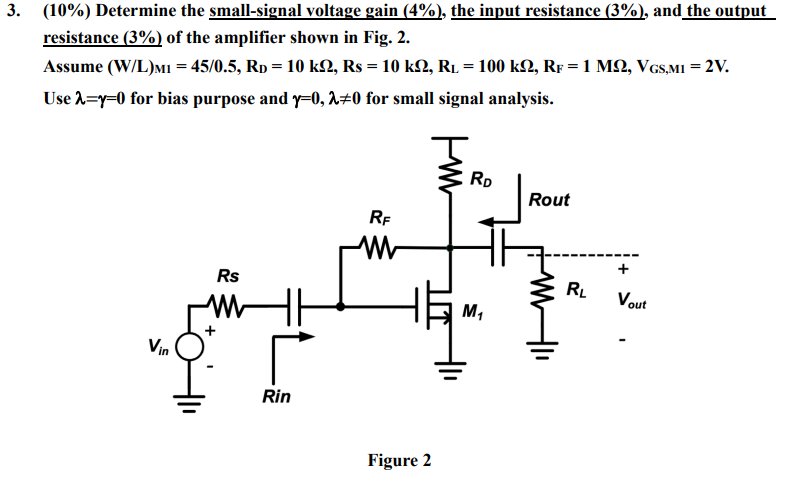(10%) Determine the small-signal voltage gain (4%), the input resistance (3%), and the output resistance ( 3% ) of the amplifier shown in Fig. 2. Assume (W/L)M1 = 45/0.5, RD = 10 kΩ, Rs = 10 kΩ, RL = 100 kΩ, RF = 1 MΩ, VGS,M1 = 2 V. Use λ = γ = 0 for bias purpose and γ = 0, λ ≠ 0 for small signal analysis. Figure 2
